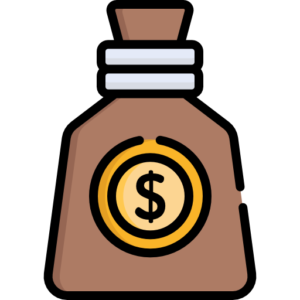Founded in the year 2006, Patanjali has become the fastest growing FMCG company in India with a revenue of 11,000+ crores. Baba Ramdev along with Acharya Balkrishna started Patanjali with the objective of establishing the science of Ayurveda in accordance and coordination with the latest technology and ancient wisdom.
The growth story of Patanjali is nothing short of being exceptional and for this reason, it becomes all the more important to understand the SWOT Analysis of Patanjali and learn as to what factors helped it in its growth and what factors can pose a problem for the company in the future.
SWOT Analysis of PATANJALI
 Strengths oF Patanjali:
Strengths oF Patanjali:
Strengths describe the factors that which the organization is good at and what separates it from its competitors.
—BABA RAMDEV: The name Baba Ramdev is synonyms to Patanjali, it’s because of his popularity and goodwill that the brand has seen an exponential growth in such a short span of time.
–AYURVEDA & HERBAL: Patanjali has played the card of swadeshi products to its best. Patanjali products are made of Ayurveda and Herbal natural components and the brand has been very successful in promoting and communicating the benefits these Ayurveda and herbal products to its customers.
–PRODUCT PRICING: One of the major factors that have supplemented the growth of the brand is the pricing of its products. Patanjali has used penetration pricing for all its products making it accessible for customers from every walk of life. There is a minimum of 30% difference in the price of Patanjali products and their competitor products.
–STRONG SUPPLY CHAIN AND DISTRIBUTION CHANNEL: With a total of 15,000+ outlets all over India, Patanjali has a strong supply and distribution channels. It sells its products medical centers such as Patanjali Chikitsalayas and Patanjali Arogya Kendras, non-medical centers such as Swadeshi Kendras.
—SELLING THROUGH E-COMMERCE PARTNERS: Patanjali products are not only available offline but you can purchase them online as well. The company has partnered with different e-commerce partners who help them sell their products online and make them available to a wider customer base.
–WIDE RANGE OF PRODUCTS: You think of a product and Patanjali will have it in its product portfolio. One of the biggest strengths of Patanjali is the wide variety of products that it has in its product mix.
— AGGRESSIVE MARKETING AND PROMOTION: Switch on your Television or any new channel the only ad which is on the loop is of Patanjali. Patanjali knew that in order to make the most of the first mover advantage (in Herbal and Ayurveda product segment) they would need to promote their brand and products heavily and that is what they did.
Patanjali spent heavily on advertising and marketing so as to make people aware of their products and brand and they very well succeeded in it.
 WEAKNESSes of PATANJALI:
WEAKNESSes of PATANJALI:
Weaknesses stop an organization from performing at its optimum level. They are areas where the business needs to improve to remain competitive:
— TO MANY PRODUCT OFFERINGS: Having too many products in one’s product line becomes more of a bane for the brands than a boon. For Patanjali as well, a major part of the revenue comes from 5-6 product categories, for rest of the products, Patanjali needs to consolidate them or push them to achieve its ambitious targets.
— PRICING STRATEGY: It will be interesting to see if Patanjali can carry on with the same penetration pricing strategy in the future and maintain strong profit margins. Labor cost, cost of raw materials and increasing competition will play a crucial role in shaping the pricing strategy of Patanjali in the future.
 THREATS of PATANJALI:
THREATS of PATANJALI:
Threats refer to factors that have the potential to harm an organization in the future. Given the fact, threats give a brand a far-sighted view about the problems that the brand is likely to face in the future, it is one of the most important factors in the SWOT Analysis of Patanjali.
–COMPETITION FROM OTHER FMCG PLAYERS: Prominent FMCG players like HUL, P&G, Marico etc have also taken the plunge and have come up with their own variants of ayurvedic products. This increased competition is posing to be the biggest threat for Patanjali, who was till now the only provider of ayurvedic products.
 OPPORTUNITIES for PATANJALI:
OPPORTUNITIES for PATANJALI:
Opportunities refer to the factors which the organization can use to its favor to grow its market share, sales, brand recognition etc. It’s the second most important factor in
–EXPANDING GEOGRAPHIES: With the portfolio of products and the pricing strategy that Patanjali has, it has great potential in the rural market and should look to expand its operations in the vast rural market of India.
–GLOBAL PRESENCE: After exploring the Indian market, Patanjali has a great opportunity to expand globally and can look for the Middle East and African nation in the beginning. Various other companies such as Dabur have already expanded globally and have been successful.
Conclusion
There are a number of challenges that Patanjali faces but still, it’s the strong brand equity, current market position, and the opportunities that pose a strong growth in the future for the brand.
This concludes the SWOT analysis of Patanjali.
Related articles:
Check out the BCG Matrix of Coca-Cola and SWOT analysis of Coca-Cola and Marketing mix of Coca-Cola
Learn more about the Swot analysis of Amul
Check out the swot analysis of Samsung
Explore more about SWOT analysis of KFC
Read more about the SWOT analysis of Mcdonald’s
Read more about the swot analysis of Pepsi, Marketing mix of Pepsi and BCG Matrix of Pepsi

 Strengths oF Patanjali:
Strengths oF Patanjali: WEAKNESSes of PATANJALI:
WEAKNESSes of PATANJALI: THREATS of PATANJALI:
THREATS of PATANJALI: OPPORTUNITIES for PATANJALI:
OPPORTUNITIES for PATANJALI: